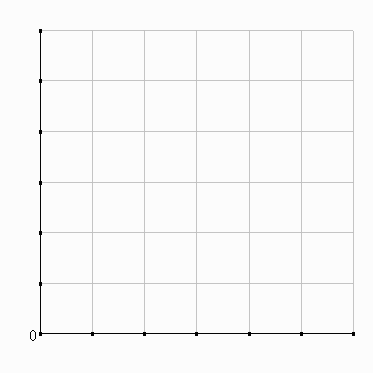| (1) the
resource substitution effect MRTS = PL/PK -PL => at initial optimum, value of L > new cost of L => substitute L for K |
 |
|
Monday, April 29, 2013 |
VIII. Resource markets
B. Resource demand in
competitive markets
2. The firm's response to input price changes
Firm's response to input price changes can get complicated. The
main conclusion is:
Input demand curves always slope down
DPL--> 2 effects:
(1) the resource substitution effect
(2) the output effect
Both increase Qd,L
| (1) the
resource substitution effect MRTS = PL/PK -PL => at initial optimum, value of L > new cost of L => substitute L for K |
 |
(2) the output effect
-PL --> -MC --> -Poutput --> +Qd for the output --> +QdL
These 2 effects together get us our result: -PL always =>
+QdL
Why? Resource substitution and
output effects always reinforce each other.
=> inputs are never Giffen goods
C. Market power and resource markets
| General MRP and MFC formulas | |
| MRPL | MFCL |
|
TR = P.Q For all firms: MRPL = d(P.Q)/dL = (P.dQ/dL + Q.dP/dQ.dQ/dL) = (P + Q.dP/dQ).MPL MRPL = MR.MPL If output market is PC, this simplifies to: MRPL = PQ.MPL = VMPL If firm has market power in output market: MRPL < VMPL, since MR < Poutput |
TFCL = PL.L MFCL = dTFCL/dL For all firms MFCL = PL + L.dPL/dL If input market is PC, this simplifies to: MFCL = PL |
 |
1. Product market monopoly
| PC markets: MR=P => MRPL = VMPL | |||
| Output monopoly: MR<P => | MR.MPL | < P.MPL | |
| MRPL | < VMPL | ||
| Example: patented bicycle tire
(wind-resistant) PL = $20 QL Q
P TR MPL MRPL VMPL4 =
PxMPL |
 |
|
|
Main conclusion: monopoly equilibrium:
MRPL = PL < VMPL =>
A monopolist pays a resource less than the value of its MP =>
A form of
economic
exploitation because PL < VMPL
Paying PL = VMPL => workers could buy back everything they
contributed to total output.
In restricting Q, monopolist stops hiring inputs at a point at
which vmp ($100) exceeds wage ($20)--workers can't buy back all they contributed.
Monopolist restricts output by underhiring inputs.
2. Buyer power: resource market monopsony
? Are college athletes exploited?
To economists, workers are exploited if they are paid less than
the value of their contribution to society. College athletes fall into this group
(Doug Flutie, FB: $3M MRP for Boston College / Wayman Tisdale,
BKB: $550K to U of OK)
These numbers reflect their value.
? What were they paid?
Few of them ever get the bigger payoff from becoming professionals (MIT
yell)
?Why does this happen?
NCAA recruiting rules make Div 1A schools act like a monopsony
Monopsony = single buyer
=> buyer faces an
upward-sloping supply curve
Monopolist restricts sales to charge more
Monopsonist restricts purchases to pay
less
Other possible examples where firm is the only employer of a
particular input:
Mining town / university town
Intern policy of AMA: get law on their side. Hospitals lose
"class a" certification if they bid on intern wages. Restricts nursing market as
well.
Reserve clause in baseball--ties player to one team
Ex: nursing
| Draw upward-sloping SL
? Why is MFCL4 > PL4? A=PL4 |
 |
|||||||||||
|
|
General result: upward-sloping SL => MFCL > PL
| TFCL = PL.L | |||
| MFCL = | PL + | L.dPL/dL | |
| wage paid to extra L --------------------- |
raise for everyone else ---------------------- |
dPL/dL = 0 for a PC buyer => MFCL
= PL
> 0 for a monoposony => MFCL > PL
Monopsony's profit-maximizing
process:
Step 1: Calculate MRPL = MR.MPL
Step 2: Calculate MFCL =
dTFCL/dL
Step 3: Hire more L as long as MRPL > MFCL --> Lm
Step 4: Pay Lm as little as possible
| Example: PL
= a + bL TFCL = PLL = aL + bL2 MFCL = a + 2bL |
 |
3. Labor unions
An attempt to organize the supply side of the market.
Tries to be a monopolist: the only seller of a resource to an
industry
The difference: Not one firm, but a collection of separate agents.
Each would like max wage possible, but must act collectively.
So, we don't know what their objective function is and so we
aren't sure exactly where they will want to set PL.
Result in competitive markets: technical inefficiency--PL's not equal in all industries
Application here: a union
can raise wages and efficiency when there is a monopsony employer.
Usually a price floor reduces Q bought and causes inefficiency
With a monoposony, a price floor can raise Q bought and reduce
inefficiency.
| Suppose the result of collective bargaining is a wage floor. Draw the MFCL curve and note the new optimum. |
 |
Summary: lack of PC on either side of a market, selling or buying side, results in inefficiency